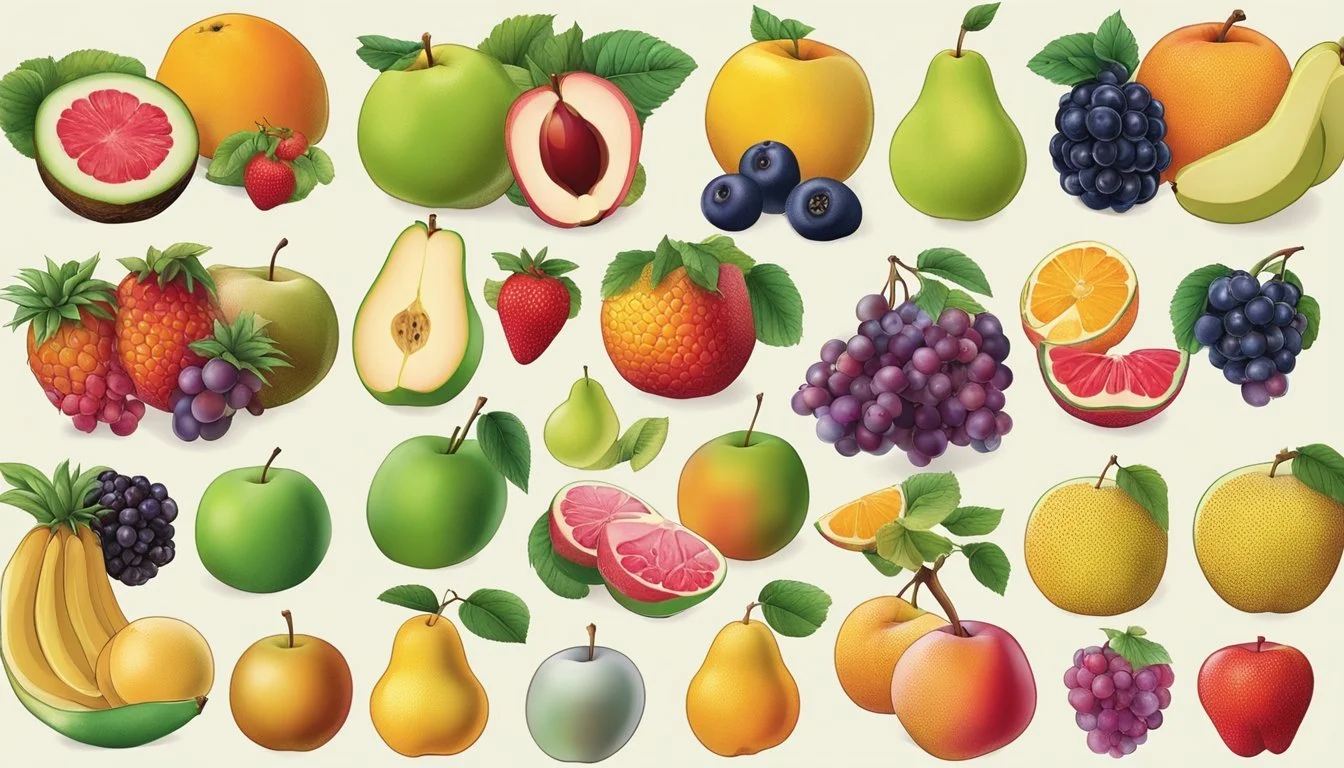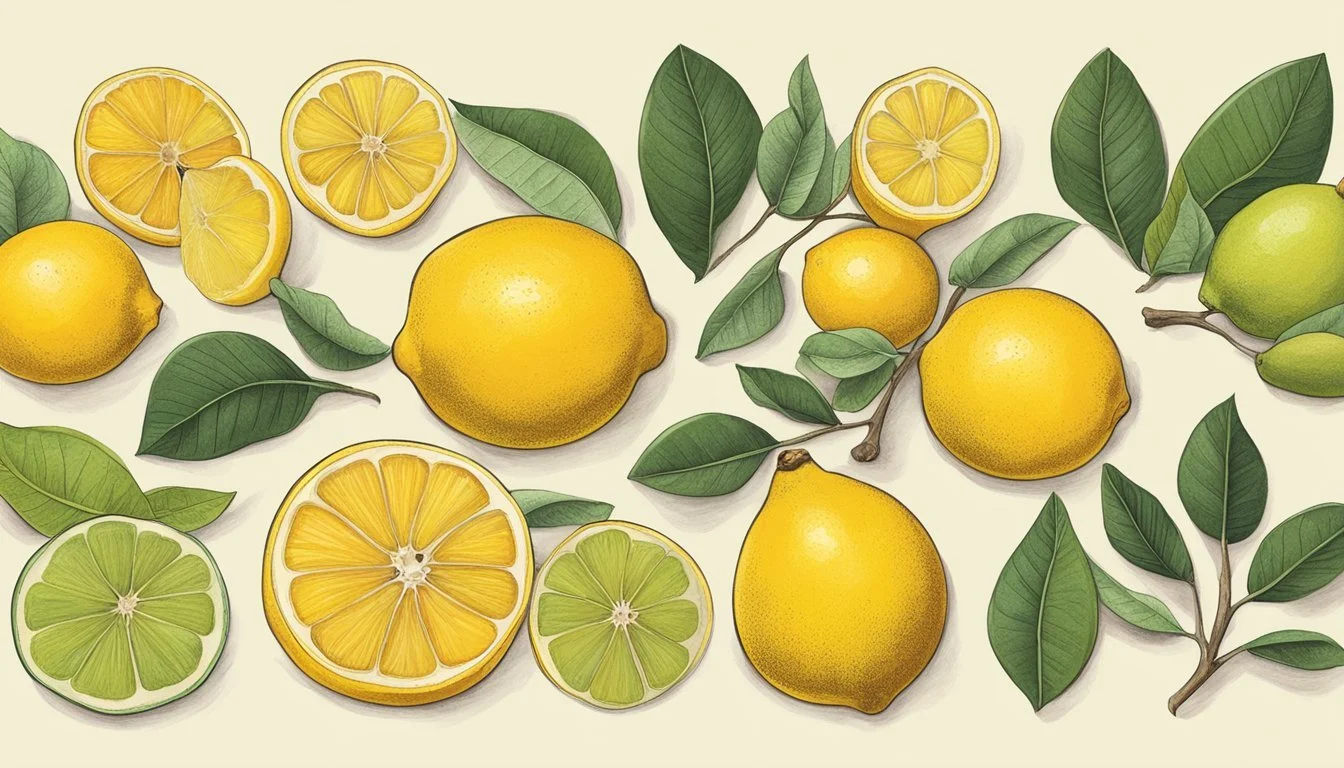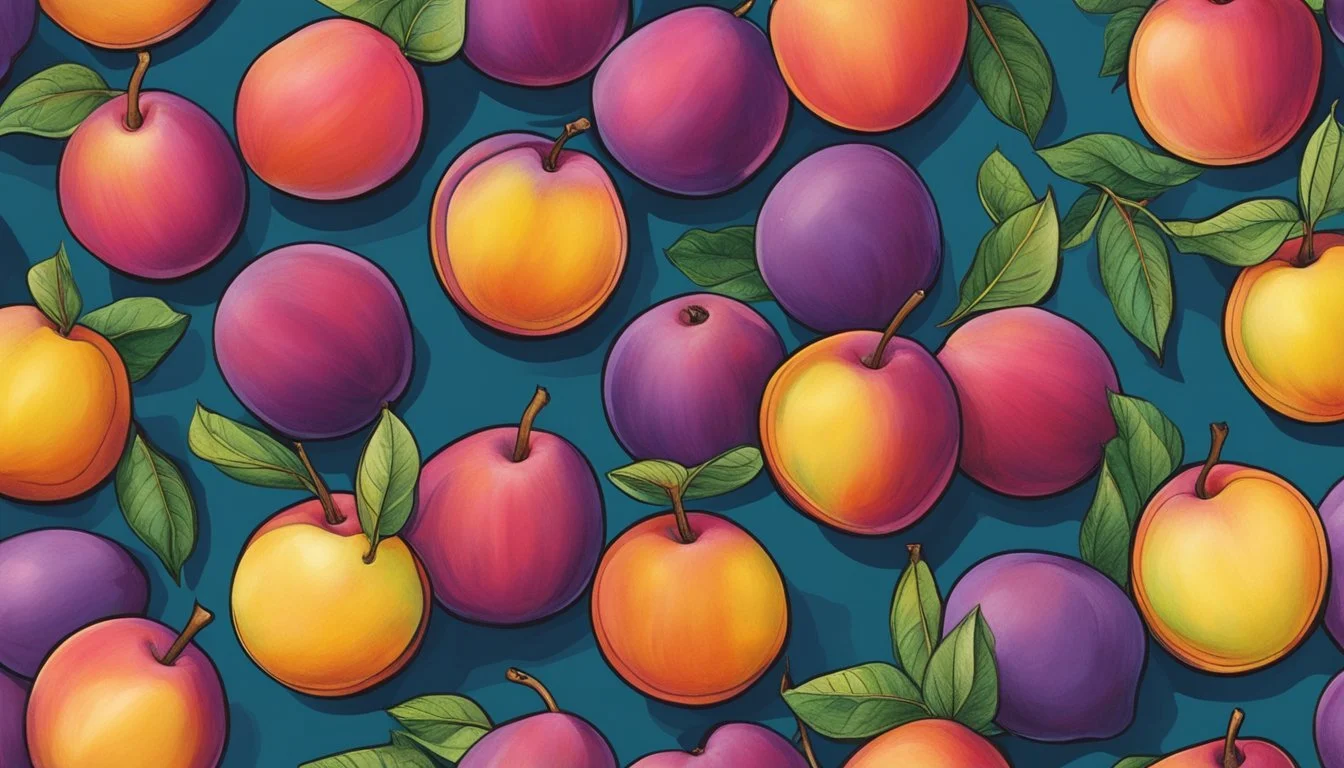10 Fruits That Have Drastically Changed
A Look at Their Evolution
Fruits, as they appear in grocery stores today, are the result of thousands of years of cultivation, selection, and hybridization. Many people may not realize that the common fruits they enjoy have undergone significant transformations from their ancient predecessors. Through careful agricultural practices and scientific advancements, these fruits have changed in taste, size, color, and nutritional content.
Understanding the evolution of these fruits offers insight into how human intervention has shaped the natural world to suit our needs. While it may seem like the apples, bananas, and watermelons we consume today have always looked and tasted the same, historical records and botanical studies reveal a different story. The transformation of these fruits highlights the dynamic relationship between humanity and nature.
1) Grapple
The grapple is a unique fusion fruit that combines the taste of a grape with the appearance and texture of an apple. Developed through a complex food science process, grapples are not naturally occurring but are crafted by infusing apples with grape flavor.
This blend results in a fruit with a crisp apple bite and the sweet, distinctive flavor of grapes. Shoppers can find these intriguing hybrids in various supermarkets and specialty stores. The grapple began gaining popularity in the early 2000s.
Despite its novelty, the grapple has not yet become a mainstream fruit. Critics often note the artificial nature of its flavor. However, supporters appreciate its innovative taste combination and unique eating experience.
2) Cotton Candy Grapes
Cotton Candy grapes are a unique variety of table grapes known for their sweet taste reminiscent of cotton candy. Developed by horticulturist David Cain and his team at International Fruit Genetics (IFG) in California, these grapes have captivated both consumers and fruit enthusiasts since their introduction in 2011.
These grapes are a hybrid derived from two common grape types, yet they boast a flavor distinct from traditional varieties. Creating seedless grapes such as these involves intricate breeding techniques, where baby embryos are cultivated in test tubes before being planted in fields.
Nutritionally, Cotton Candy grapes share similarities with regular grapes. They are low in calories and high in vitamins K and C. With roughly 104 calories per cup, they provide an appealing option for those seeking a sweet yet healthy snack.
The popularity of these grapes comes at a price. At about $6 per pound, they are more expensive than standard seedless grapes, which cost around $2.88 per pound in 2016. Despite the higher cost, the demand for Cotton Candy grapes continues to grow due to their unique taste and pleasing texture.
3) Honeycrisp Apple
The Honeycrisp apple has revolutionized the apple industry since its introduction. Developed in the 1960s at the University of Minnesota, it instantly became popular for its perfect blend of sweetness and tartness. With its crisp texture and juicy flesh, Honeycrisp quickly garnered a dedicated following.
Farmers and consumers alike appreciate Honeycrisp apples for their superior taste and texture. These apples command higher market prices due to their premium quality. Consequently, many apple orchards have increased their Honeycrisp plantings substantially.
Pollination is crucial for Honeycrisp apple production. It relies on cross-pollination from other Malus genus apple varieties like Golden Delicious, Gala, and Fuji. Additionally, crabapple trees serve as effective pollinators. The recommended ratio is 1-2 Honeycrisp trees for every 10-15 pollinator trees.
Nutrient management is key to healthy Honeycrisp apple trees. Without essential nutrients, these trees may fail to bloom properly, affecting the overall yield. Regular soil testing and targeted fertilization help maintain the right balance of minerals and vitamins.
Honeycrisp apples also face challenges due to their thin, shiny skin. This makes them prone to injury during handling and transportation. Growers often handle these apples with more care to minimize damage and preserve their market value.
4) Zespri SunGold Kiwi
Zespri SunGold Kiwi began development in the 1990s through a natural breeding program. This yellow-fleshed variety differs from the traditional green kiwi with its sweeter, tropical taste and smoother skin.
The fruit is a nutritional powerhouse, boasting high levels of vitamin C—four times the recommended daily allowance in one serving. It also has more potassium than a banana, low fat, and high fiber content.
SunGold Kiwis are known for their low Glycemic Index and low FODMAP properties, making them suitable for various diets. With fewer than 100 calories per two medium-sized fruits, they offer health benefits without excess calories.
Since its introduction to the American market six years ago, SunGold Kiwi has seen a rapid increase in demand. Creative marketing campaigns and unique packaging have contributed to a sales boost, making it one of the fastest-growing fruits in the market.
Organic versions of SunGold Kiwi have also gained popularity, with sampling opportunities expanding in events like the Organic Produce Summit. This growth reflects consumer interest in nutrient-dense, flavorful fruits.
5) Cosmic Crisp Apple
The Cosmic Crisp apple is a recently developed hybrid variety, combining the Honeycrisp and Enterprise apples. Breeding for this apple began in 1997 in Wenatchee, Washington.
Cosmic Crisp apples are known for their beautiful appearance, featuring light spots against a deep red skin, reminiscent of a starry night sky.
This apple offers a harmonious blend of the Honeycrisp's sweetness and the Enterprise's long shelf life, which helps it stay fresh for up to a year under proper storage conditions. Their crisp texture and balanced flavor make them a favorite among consumers.
With 12 million trees already planted, Cosmic Crisp apples are widely available at supermarkets and retailers across the United States. Their impressive qualities and marketing efforts, including a $10 million launch campaign, have made them a notable addition to modern fruit varieties.
6) Pink Lady Apple
The Pink Lady apple, known by its cultivar name Cripps Pink, was developed by John Cripps in the 1970s at the Western Australia Department of Agriculture. It is a cross between the Lady Williams and Golden Delicious apple varieties.
Pink Lady apples are distinctive for their vibrant pink-red skin and crisp white flesh. They require a long growing season and thrive in warm climates with plenty of sunlight.
Growers often remove the top-most leaves of the trees to ensure adequate sunlight reaches the apples. This practice helps develop their characteristic pink coloration.
Soil conditions are crucial for Pink Lady apple trees. They prefer slightly acidic soil with a pH between 6.0 and 6.5. Necessary adjustments, like adding lime to raise pH or sulfur to lower it, can optimize growth.
The taste of Pink Lady apples is unique, offering a sweet yet slightly tart flavor that is well-balanced. This combination makes them popular for both fresh consumption and culinary uses.
Pink Lady® was the first apple to receive a trademarked name, which has helped in its marketing and recognition worldwide. Growers must obtain licenses to produce these apples under the Pink Lady® brand.
7) Blood Orange
The blood orange, known for its distinctive deep red flesh, has seen changes that enhance its nutritional profile. Originally consumed for its unique flavor and color, recent research has shown that storing them at specific temperatures increases their anthocyanin and antioxidant content.
Storing blood oranges between 40 to 53 degrees Fahrenheit boosts phenolic content. Cooling them further to 43 to 46 degrees preserves firmness, weight, and sugar content. These attributes ensure the fruit maintains its quality and taste during storage.
Blood oranges are celebrated for their rich anthocyanin content, which is also responsible for the deep red hue. This compound is found in other colorful fruits like blueberries, blackberries, and cranberries, making blood oranges a nutritious choice.
These advancements in storage techniques have made blood oranges even healthier, allowing consumers to enjoy their benefits for longer periods. This focus on preservation and enhancement has cemented the blood orange's place in the category of superfruits.
8) Broccoflower
Broccoflower is a hybrid vegetable that combines characteristics of broccoli and cauliflower. It has a similar texture to cauliflower but features the greenish hue of broccoli. This unique crossbreed isn't naturally occurring and requires careful cultivation.
Gardeners often create broccoflower by planting broccoli and cauliflower side by side.
The process involves using a small paintbrush to transfer pollen from one plant's flowers to the other. This meticulous pollination leads to the formation of broccoflower. The result is a vegetable that retains the nutrient benefits of both its parent plants.
Broccoflower can be cooked or eaten raw, just like broccoli and cauliflower. It is often steamed or added to salads for a nutritious boost. Its mild flavor makes it a versatile addition to various dishes.
When cooked, broccoflower maintains its vibrant green color, adding visual appeal to meals. Chefs and home cooks alike appreciate its aesthetic and nutritional values. This hybrid illustrates how agricultural techniques can produce interesting and beneficial variations of familiar vegetables.
9) Meyer Lemon
The Meyer lemon is a citrus fruit that stands out due to its unique characteristics. Unlike common lemons, it's a hybrid between a lemon and a mandarin orange. This gives it a sweeter, less acidic flavor which is appreciated by many culinary enthusiasts.
Its skin is thinner and smoother compared to other lemon varieties. The color of the Meyer lemon can range from a deep yellow to a warm orangey tint when ripe, making it visually distinct.
The fruit is juicier than other lemons, often yielding more liquid per fruit. This quality makes it a favorite for making lemonade, cocktails, and other beverages. Additionally, the Meyer lemon's zest is aromatic and less bitter, enhancing many dishes and desserts.
Meyer lemon trees are relatively compact and can be pruned easily to keep them healthy and productive. They thrive in pots or directly in the ground, making them versatile for home gardeners.
In recent years, the improved Meyer lemon has gained popularity. This variant shows enhanced resistance to diseases and pests, making it a more robust choice for cultivation. Despite these changes, the core qualities of sweetness and juiciness remain.
10) Pluot
Pluots are a hybrid fruit created by crossing plums and apricots. The fruit was developed in the 1980s by Floyd Zaiger, a notable fruit breeder.
They offer a unique blend of sweetness from plums and tartness from apricots. Pluots typically have smooth skin and come in a variety of colors, including green, red, and purple.
Popular varieties include Dapple Dandy, Geo Pride, and Flavor King. These varieties differ slightly in taste and appearance, providing a range of experiences within the same hybrid category.
Pluots are often appreciated for their distinct texture and flavor, making them a favorite among fruit enthusiasts. Despite their relatively recent emergence, they have gained a significant following.
The Evolution of Fruits
Fruits have undergone significant changes due to human cultivation and selective breeding. This evolution is shaped by historical practices and modern agricultural techniques.
Historical Context
Historically, humans began influencing fruit evolution through selective breeding thousands of years ago. Early farmers chose fruits with desirable traits, such as sweetness or larger size, to propagate. For example, wild ancestors of modern bananas contained large seeds and were much smaller. Through centuries of selection, bananas evolved into the seedless varieties commonly consumed today.
Tomatoes initially were small, berry-sized, and came in a variety of colors, including yellow and green. Early cultivation focused on increasing their size and enhancing their flavor. Watermelons, depicted in 17th-century paintings, looked vastly different with swirls of pulp and seeds, unlike the uniform, juicy red interiors seen today.
Modern Influences
In modern times, genetic modification and advanced agricultural techniques have further transformed fruits. Genetic engineering allows scientists to enhance resistance to pests and diseases, improve shelf-life, and increase nutritional content. For instance, apples have been bred to resist browning, while tomatoes have been engineered for better firmness and transportability.
Modern farming practices, including controlled environments and hydroponics, enable year-round production and consistent quality. This results in more uniform, aesthetically pleasing fruits available in markets worldwide. The strawberry, once a seasonal fruit, is now widely accessible throughout the year due to these advancements. Additionally, emphasis on large-scale production has led to the commercialization of certain varieties, often at the expense of flavor and diversity.
Genetic Modification and Its Impact on Fruits
Genetically modified (GM) fruits have undergone significant changes to improve their traits and meet market demands. These modifications have implications in various areas including agriculture and health.
Case Studies
Several fruits have been genetically modified to enhance specific characteristics. Tomatoes, for example, have been engineered to resist pests and increase shelf life. This results in reduced pesticide usage and better yield.
Papayas were modified to resist the ringspot virus, significantly saving the industry in Hawaii. Bananas are also a focal point, with modifications aiming to combat diseases like banana wilt and increase nutritional value.
GM apples, specifically the Arctic apple, are designed to resist browning, making them more appealing and reducing waste. Each of these cases reflects specific goals and achievements in fruit modification.
Health Implications
Health implications of consuming GM fruits remain a subject of thorough research. Nutritional Content: Some modifications aim at enhancing nutritional profiles, like increasing vitamin or mineral content. This can lead to better health benefits for consumers.
Allergenicity: Concerns exist over potential allergens introduced through genetic modification. Current GM fruits undergo rigorous testing to ensure they are safe for consumption.
Long-term Effects: Ongoing studies look into the long-term health impacts. Existing evidence generally shows GM fruits are comparable to traditional varieties in terms of safety.
Safety assessments by food regulatory agencies ensure that GM fruits on the market do not pose health risks. This rigorous scrutiny helps maintain confidence in the safety of genetically modified produce.





